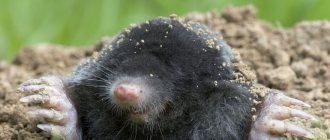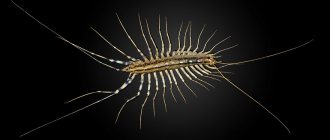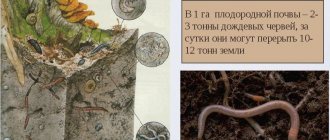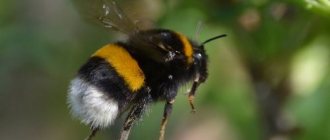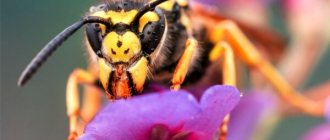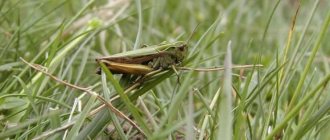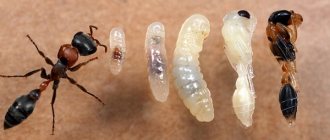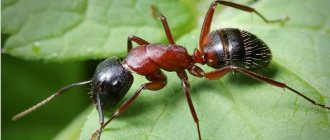What you need to know about honey ants? Where honey ants live, description of appearance, lifestyle, nutrition, reproduction, photos of individuals. Life cycle of insects. Why did arthropods become a delicacy for local residents?
What kind of wonders are not found in nature. For example, hot countries can boast of the presence of anthills with unusual arthropods, which are distinguished by a huge round belly of amber color, they are called honey ants, a detailed description and photo of what they look like are given below.
General information data
This exotic and rather peculiar insect is adapted to the hot climatic conditions of the desert. They are found in North America (Mexico, western USA), Australia, and South Africa.
The presented places are distinguished by the presence of small amounts of food and water. Currently, 5 species of honey ants have been studied, the appearance of which resembles amber jewelry; their huge round abdomens accumulate liquid carbohydrates - honey.
Like other species, the honey ant lives in a colony, but it is worth noting that each of them can have a different size - the number can range from several hundred to several million individuals. Among them are the queen that lays eggs (the maximum number is 1500), workers and males.
Nutrition
These arthropods got their name because of the food they eat - honey (in other words - honey) dew, its sources are plant aphids.
Insects (aphids) consume plant sap, which contains a large amount of sugar in its composition, and because of its excess, honey dew is obtained, which honey ants happily lick off.
Most often, they look for it on the leaves of vegetation, but in the absence of food, they begin to “milk” plant aphids - this process is carried out through the antennas with which the individuals stroke them, thereby obtaining the release of nutrition important for their life.
And more about insects.
The German wasp is soft, fluffy and very dangerous.
When you see this insect in the forest, you will hardly guess which family it belongs to. The easiest way to classify this insect is as an ant, a huge black and white three-centimeter ant. But in fact, this is not an ant, it is a wasp. Orchid mantis. In the dry language of Wikipedia: “The orchid mantis (lat. Hymenopus coronatus) is a species of mantis, type species of the genus Hymenopus Serville, 1839. It got its name because of its unusual coloring, which makes it look like an orchid flower. Able to change its color from white to pink. The adult is usually light pink in color, but the larvae that hatch from the eggs are red-black and look like ants. They live in the tropical forests of India and Indonesia. The size of females is up to 8 cm, males are 4 cm. The main food is insects.”
Spangled wasps. Splendid wasps are the most beautiful insects and few insects can compare with them in beauty. The shiny wasp has a body with a chitinous cover that sparkles like precious stones. Shiny wasps have a very bright and beautiful shiny color: green, blue, red. True, sparkles are not so large and usually do not exceed one and a half centimeters. Most often, glossy wasps are small wasps, 3-15 mm long. A characteristic feature of shiners is that their abdomen consists of 3 visible segments; only in the subfamily Parnopinae the abdomen of males consists of 4 segments.
I'm on My World, Odnoklassniki, Facebook, Twitter, Google Plus, Instagram, Telegram.
Distinctive features
The honey ant has a rather original appearance; individuals are characterized by a large abdomen, which is filled with honey, thereby giving them an unusual color.
If we talk about other features, they are almost no different from other representatives of the families - they have a small head, antennae, and three pairs of legs.
It is worth noting that the unique insects have another name - barrels, they are distinguished by a rather elastic abdominal wall, so they have the ability to increase to the size of grapes, because of this the local population is accustomed to calling them earthen grapes.
Appearance
What adds to the unusual appearance of the insects is their large abdomen filled with honey. A small head with antennae, three pairs of legs, and sternum are the same as those of all representatives of the ant family.
The second name for these original individuals is barrel ants. The abdominal walls are so elastic that they reach the size of a grape. Locals call them earth grapes.
Interesting!
Another unusual fact concerns the size and placement of insects. Due to the large size of the abdomen, honey barrel ants cannot move. They are located in a hanging position at the top of the anthill. If for some reason the insect breaks off, the “belly” bursts.
What's special
Honey ants are an ecological group that includes several genera of insects capable of storing liquid carbohydrates inside the abdomen of one of the worker castes.
Since there is not enough food in the desert, the colonies act as storage barrels; in some cases, they are able to “stuff” themselves with nutritious juices so much that they will not even be able to move. In this state, they suspend themselves from the ceiling of the anthill until their food supplies run out.
At those moments when other individuals want to eat, they come to the pot-bellied sweet tooth and force them to secrete a small amount of juice. Honey dew is rich in fructose and glucose, thanks to which insects are supplied with sufficient strength and energy for life.
A lean year is not a problem for a large anthill (a dwelling where more than 1.5 thousand insects live), since a sufficient amount of sweet food accumulates in their bellies for survival.
They also attract local residents who want to feast on them - they catch arthropods and use them as sweets.
Honey barrels
The closest relatives of honey ants feed on small insects, carrion, but most often on nectar and honeydew. But species that live in desert areas cannot always find a source of food, so they have developed a way to survive in unfavorable times.
Insects store food reserves not just in their chambers, but in the bodies of their relatives - a separate group of worker ants. “Honey barrels” are able to feed not only their larvae, but also the entire family, saving it from death in times of famine.
Honey ants have very elastic abdominal walls. In favorable times, when there is plenty of food, ants eat until their abdomens swell to their maximum. The size of the abdomen is several times greater than the size of the insect itself. Sometimes, due to their weight, ants lose the ability to move and simply cling with their paws to the ceiling of the chamber in the anthill and hang. Such “storages” can contain up to 2 thousand honey barrels.
Interesting fact. Australian aborigines specifically find ant nests, dig them up and eat “honey barrels” as a dessert. Also, due to the external resemblance of honey ants to grape fruits, they nicknamed them earth grapes.
Where does honey come from?
Insects feed on plant sap with a high concentration of carbohydrates, called honeydew. In deserts, the source of such dew is often acacia. Sometimes ants themselves collect nectar from plants, and sometimes they use the services of aphids.
Small insects excrete part of the absorbed nectar, leaving it on the leaves, and the ants then eat it. Sometimes the ants do not wait for the aphid to release the dew itself, but begin to “milk” it, tickling it with its antennae. Since the ant does not need a lot of food to maintain its vital functions, most of the sweet nectar ends up in the honey barrel.
How ants give nectar
To get nectar, ants must ask their relative to give them a portion of the treat. To do this, they knock their antennas on the “honey barrel” with a certain frequency and rhythm. The honey plant recognizes the code and opens access to food.
The flow of fluid is regulated by a special gastric valve, which is represented by four valves. Researchers have noticed that during its life, each “honey barrel” is emptied and filled more than once.
Lifestyle Features
It is almost impossible to find such unusual insects on earth; they are a caste of ants that are familiar in appearance, but even at the stage of development, the pupae attach to the wall of the anthill, remaining motionless.
Since they need a large amount of food, their relatives regularly bring them food, after which they acquire funny sweet bellies.
Breeding honey ants
The income of ants at home is a rather original and exotic handicraft.
When breeding these unusual insects, you have to come into conflict with many accompanying insects: cockroaches, flies, crickets, etc. Moreover, you also need to maintain food crops that are familiar to ants in their natural habitat. Without them, it is impossible to get a full-fledged prosperous colony.
What destinies should be made:
- Decide on the type of ants you want.
- Provide appropriate equipment for terrariums and food insects.
- Recognize the queen ant (buy or catch it yourself). More often it is purchased secondhand from other amateur myrmecologists.
- Set up the necessary conditions for keeping the incubator with the queen (rest, illiteracy and temperature of approximately 27 ° C).
- Buy a magnifying glass, tweezers, a thermometer, and to some extent test tubes.
- Make an incubator in advance.
Reproduction process
The process of mating between a male and a female occurs during the mating season 2 times a year. The resulting seminal fluid reaches the female in such quantities that it is enough to reproduce offspring throughout her life.
After the larvae appear, a procedure for dividing into castes is carried out, implying a division of responsibilities - family members will play their role. It is worth noting that the inhabitants of the same anthill are relatives who received life from the same queen.
Notes
- Capinera, John L.
Encyclopedia of Entomology. - Springer Science & Business Media, 2008. - ISBN 978-1-4020-6242-1. - Morgan, R. Biology, husbandry and display of the diurnal honey ant Myrmecocystus mendax
Wheeler (Hymenoptera: Formicidae). Archived from the original on July 17, 2010. (English) (Retrieved January 21, 2011) - Akimushkin I.I.
Living container... // Animal World: Insects. Spiders. Pets. — 4th ed. - M.: Mysl, 1995. - T. 3. - P. 131. - 15,000 copies. — ISBN 5-244-00806-4. - Honey ants of the world: comparative taxonomy and range of ants that develop highly engorged repletes. Archived September 3, 2010 on the Wayback Machine (Retrieved January 21, 2011)
- Hölldobler & Wilson: The Ants. Springer (1990) - ISBN 3-540-52092-9
What is the mission of these arthropods?
Young females, after fertilization, leave the old home, looking for a favorable place for themselves to begin building a new anthill, thereby giving rise to the creation of a new colony. Their homes are located deep in the ground, and the number of inhabitants can reach a couple of thousand people.
Hungry individuals in difficult times are accustomed to approaching barrels; they begin to tickle the belly with the help of antennae, thereby signaling the insect to give up some juice.
Individuals regurgitate food, giving the rest of the family the opportunity to have a snack. The purpose of this caste is to save the family in times of famine.
Anthills where there is a row of ant barrels resemble a vineyard, since the amber-colored berries hang down to the bottom and remain almost motionless. The local population looks for such anthills to obtain honey. Often, people eat honey bellies whole as a delicacy.
Nature has approximately 12 thousand species of arthropods, of which 35 are honey species.
Honey ants
In this issue you will find photographs of honey ants - amazing creatures that live in the desert and have long served as a dessert for the Australian aborigines. We will be able to look inside the anthill thanks to the painstaking and complex work of British researchers who spent two years creating a documentary about the life of these unique creatures.
English naturalist John Brown worked for many years in the Arizona desert, creating a film about the unique honey ants (Myrmecocystus mimicus) for the BBC. The film was released under the title “Empire of the Desert Ants.” In total, there are 5 genera of honey ants in nature, and they all live in deserts. Honey ants can be found in the deserts of North America, Africa and Australia. To survive in conditions of constant lack of food and water, these ants have “developed” an interesting way of preparing and storing food. As you know, all ants are divided into special castes, among which there are soldiers, workers, and kings. Honey ants have a special caste of workers that specialize in storing honey in their own abdomen. During those short periods when there is a lot of food in the desert, these workers are intensively fed by other ants. As a result, the workers' goiters become so swollen that they look like real honey barrels. Sometimes a swollen ant can reach the size of a small grape. Live honey barrels sit in a special pantry, and at the right moment they are always ready to regurgitate a little honey and feed a hungry fellow. Ant honey is so good that people also eat it with pleasure (only in this case the honey is eaten along with a live barrel). Local residents have always considered these ants a delicacy. On average, a colony of honey ants lives about 30 years. John Brown filmed material for the film over the course of two whole years and tried to show all the stages of development of the ant colony. Filming the inside of the colony was a very difficult task, since the soil in the desert is not much worse than concrete in its hardness, and anthills can go underground to a depth of more than three meters. To get a realistic and at the same time good filming, John Brown had to not only film natural anthills, but also made an artificial anthill in which he placed several young female honey ants. John Brown says that if he had decided to film ants exclusively in their natural habitat, he would have had to spend long hours under the scorching desert sun waiting that the ants will finally do something interesting. The place where the filming took place is quite dangerous - there is a busy trail of drug couriers delivering their potion from Mexico. But, nevertheless, the film crew did their job. John Brown says that despite the harsh climate, these places are so beautiful that he simply dreams of returning there to make another film. While working on the film, John Brown constantly monitored the weather to film how the behavior of ants changed in depending on weather changes. If he was returning home and the weather suddenly began to change sharply, the naturalist would again rush into the field to the anthill and continue filming. John's wife Julie even jokingly said that now her husband's life is controlled only by the weather and ants. Equipment that was used during the filming of the film One of the “rooms” in the ant colony.
5
